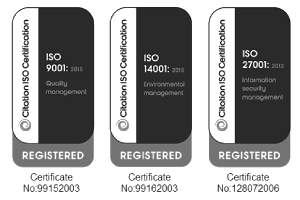Brent’s Bee Corridor
2019 was the year that the bees came back to Brent. The Council took its first steps towards this in 2017, and by 2019, theory became reality and it had created its first Bee Corridor; working in its own way to reverse the national decline in meadows and increase the biodiversity of the borough.
In 2017, Brent Council looked for creative ways to solve two problems. How to increase biodiversity across the borough and how to make savings of £240K. The two ideas seemed to be in conflict, until the Council decided to introduce meadow areas in 24 local parks. Leaving areas of longer grass in some parks seemed like the perfect solution; providing a safe and inclusive habitat for nature and at the same time-saving money by reducing the amount of times grass had to be cut, from 16 times a year to once.
The challenges of the first two years were vast. No one liked the long grass, not even the insects the Council was trying to encourage!
E-mails were received noting that the long grass fell considerably short of a real meadow. However, the Council persisted and produced an ‘infographic’ explaining the annual lifecycle of local meadows.
The public was warming to the idea; but the project still needed to win over both residents and the insects that it was seeking to entice to local parks, in the quest for an increase in biodiversity.
The challenges remained twofold; how to engage the public in a vibrant discussion about increasing biodiversity in parks within an urban setting, and how to create ‘ fast track meadows’, with natural bursts of wildflowers. Then the concept of the Bee Corridor was born. Bees everywhere issued a collective sigh of relief as humans at Brent Council caught up with their environmental needs.
The Council worked tirelessly on the design, with involvement from the parks team, Veolia and the internal communications team. Additional finance was invested in the purchase and sowing of wildflower seed over a three year period, and thereby creating the seven-mile Bee Corridor.
A third of each of 22 meadow areas was designated as the wildflower area. Areas were selected near to pathways and entrances allowing visitors to the park to see the immediate impact of the wildflowers. The drifts had to be created in a natural-looking pattern and with the use of absolutely no pesticides, herbicides and other chemicals.
By the beginning of March, the drifts were being dug over, raked and wildflower seeds - carefully selected to ensure they were compatible with London soil - were being sown. Videos were produced to communicate the reasons for the large dirt ‘snakes’ appearing in their parks and social media communications were posted to help residents anticipate the colourful change that was coming. Briefings were held with councillors and a local environmental group and free wildflower seeds were also distributed to get people excited about the project.
Then, on the late May Bank Holiday weekend, the Evening Standard ran an exclusive story about Brent’s newly created Bee Corridor. Coinciding with the release of the UN report on Biodiversity, the news article went viral, spanning not just media outlets in the UK, but worldwide. There was no pressure for the wildflowers to grow at all…
Then the Council held its breath; until on an evening walk home through the park on the 4th June 2019, the first flowers had started to bloom. Photos were frantically taken of the purple blooms of Fiddleneck and in a moment of reflection, there was a buzzing sound... the first bumblebees had found their very own food corridor and habitat.
The Council has achieved their aim and not only saved money but creatively developed a solution that increased biodiversity in local parks in the most spectacularly colourful way. Residents were taking photos in the wildflower meadows and posting them on Instagram and the feedback was positive. “Best initiative Brent has carried out”, posted one happy resident; whilst surrounded by bees, butterflies and bush crickets.
2020 will see the expansion of the Bee Corridor and bring with it more colour, vibrancy and biodiversity.
This initiative recently won the APSE Innovation Award in Parks. This summary has been taken from the APSE Environmental Services Innovation Awards brochure. The brochure contains the summaries of every shortlisted submission in 2017, 2018 and 2019, and is free to download here.
.jpg)


.png)



.png)